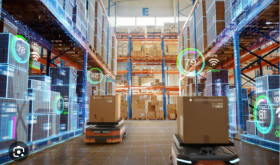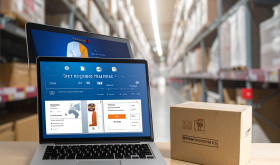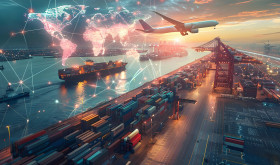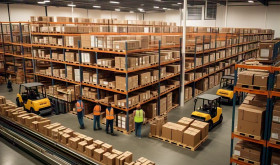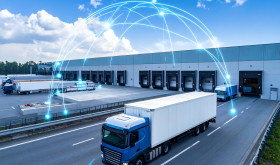
The world economy is now like a stormy ocean rocked by rising prices, supply chain disruptions, and fluctuating fuel costs. Those companies that depend on moving goods, are taking the hardest hit from these ups and downs. In this tough climate, a strong transport management system isn’t just a fancy tech add-on; it’s a must-have tool to survival and sustained growth.
A transport management system is a software platform that aims to improve and simplify how goods move, from planning and carrying out to tracking and analysis. It works as a main hub linking shippers, carriers, and customers, facilitating seamless communication and data exchange. In today’s economic world, its value is even higher, offering a way out to businesses trying to maintain profitability and operational efficiency.
The Economic Headwinds:
Several factors are contributing to the current economic woes:
- Inflationary Pressures: Higher costs of fuel, labour, and raw materials squeeze profit margins. This forces companies to look for ways to cut costs in all aspects of their business.
- Supply Chain Disruptions: World events, political tensions, and ongoing COVID-19 issues keep disrupting supply chains. This leads to delays, shortages, and pricier transportation.
- Fuel Price Volatility: Changes in fuel prices have a direct impact on transportation costs. This makes it hard for businesses to predict and control their expenses.
- Labour Shortages: Not enough truck drivers and other logistics workers puts more stress on the transportation industry. This causes delays and drives up labour costs.
- Higher Customer Demands: Despite economic hardships, customers still want quick and dependable delivery. This puts businesses under pressure to keep up their service quality.
Transport Management System as a Strategic Solution:
In the face of these challenages, putting a transport management system into action the right way can offer several key benefits:
- Cost Optimisation:
- A transport management system helps businesses to cut down on transportation costs. It does this by finding the best routes, putting shipments together, and picking the cheapest carriers. This helps companies deal with rising prices and changing fuel costs.
- By using computers to do tasks people used to do, a transport management system can lower administrative costs and make work more efficient.
- The transport management system can check freight bills to make sure they’re right and help get money back if a company has paid too much.
- Better Supply Chain Visibility:
- Real-time tracking lets businesses see where their goods are at all times. This means they can spot and fix problems before they get worse.
- This enhanced view has an impact on stock control, cuts down on empty shelves, and shortens hold-ups easing the effects of supply chain disruptions.
- Better Efficiency and Output:
- Automating jobs like planning loads, dispatching, and billing frees up valuable time and resources, letting companies focus on strategic plans.
- Improved communication and teamwork between shippers, carriers, and buyers can streamline operations and cut down on mix-ups.
- The transport management system helps to optimise loading and unloading times, which boosts the flow of the transport network.
- Data-Driven Decision Making:
- A transport management system gives useful info and breakdowns on how transport is doing helping businesses spot where to improve and make informed choices.
- Companies can use this data to optimise routes, get better carrier rates, and boost customer service.
- The transport management system gives insights into how carriers perform, helping a company pick the best carriers for each shipment.
- Better Customer Service:
- Real-time tracking and delivery updates make customers happier by giving them more transparency and control over their shipments.
- Better delivery performance can lead to more loyal customers and repeat business.
- The transport management system automates customer notifications, keeping customers in the loop about their shipments’ status.
- Ability to Adapt and Move Fast:
- When the economy is volatile, companies need to shift gears fast to keep up with changes. A transport management system gives them the room to move and the speed to tweak how they handle shipping when the market fluctuates.
- The transport management system can help businesses adjust to new rules and stay on the right side of the law.
Tackling Specific Economic Issues:
- Fighting Inflation: A transport management system can help businesses cut fuel use and shipping expenses by finding the best routes and combining shipments. This helps lessen the impact of rising prices.
- Handling Supply Chain Disruptions: Businesses can spot and fix potential issues before they happen, due to real-time tracking and monitoring. This cuts down on delays and makes sure deliveries arrive on time.
- Dealing with Changing Fuel Prices: A transport management system helps businesses use fuel more efficiently. It does this by picking the most cost-effective routes and carriers, and by keeping an eye on fuel costs.
- Solving Worker Shortages: By automating jobs like planning loads and dispatching, businesses need fewer workers. This helps them cope with not having enough staff.
The Future of TMS in Economic Uncertainty:
As the economy remains uncertain, a strong transport management system will become more and more crucial. Companies that invest and make good use of a transport management system will be in a better spot to handle challenges and emerge stronger. Looking ahead, transport management system will integrate with other supply chain tech, like AI and machine learning, to boost automation and prediction abilities. This will help businesses anticipate and react to problems even better.
To wrap up, a transport management system isn’t just a piece of software; it’s a strategic asset that can help businesses survive the current economic downturn and build a stronger more sustainable future. By cutting costs, improving oversight, and boosting productivity, a transport management system can help companies tackle challenges and seize opportunities , ensuring long-term success in our ever-changing world.

